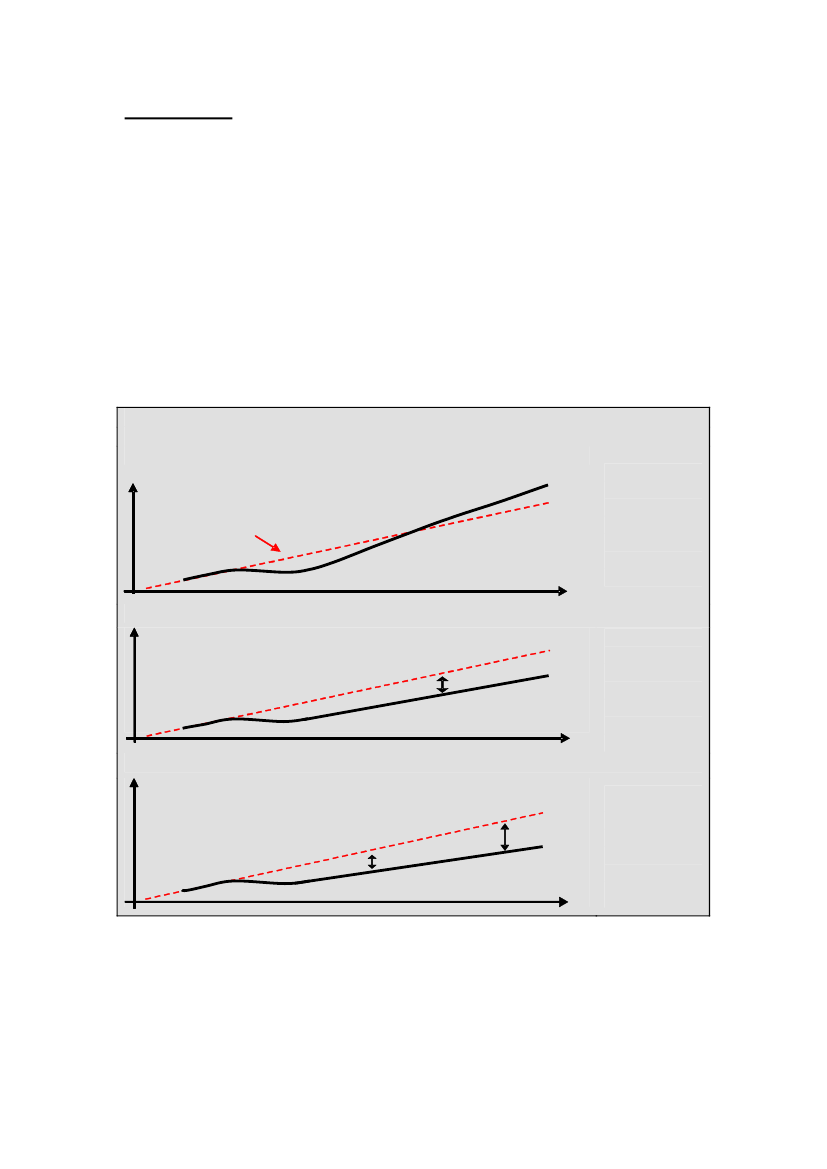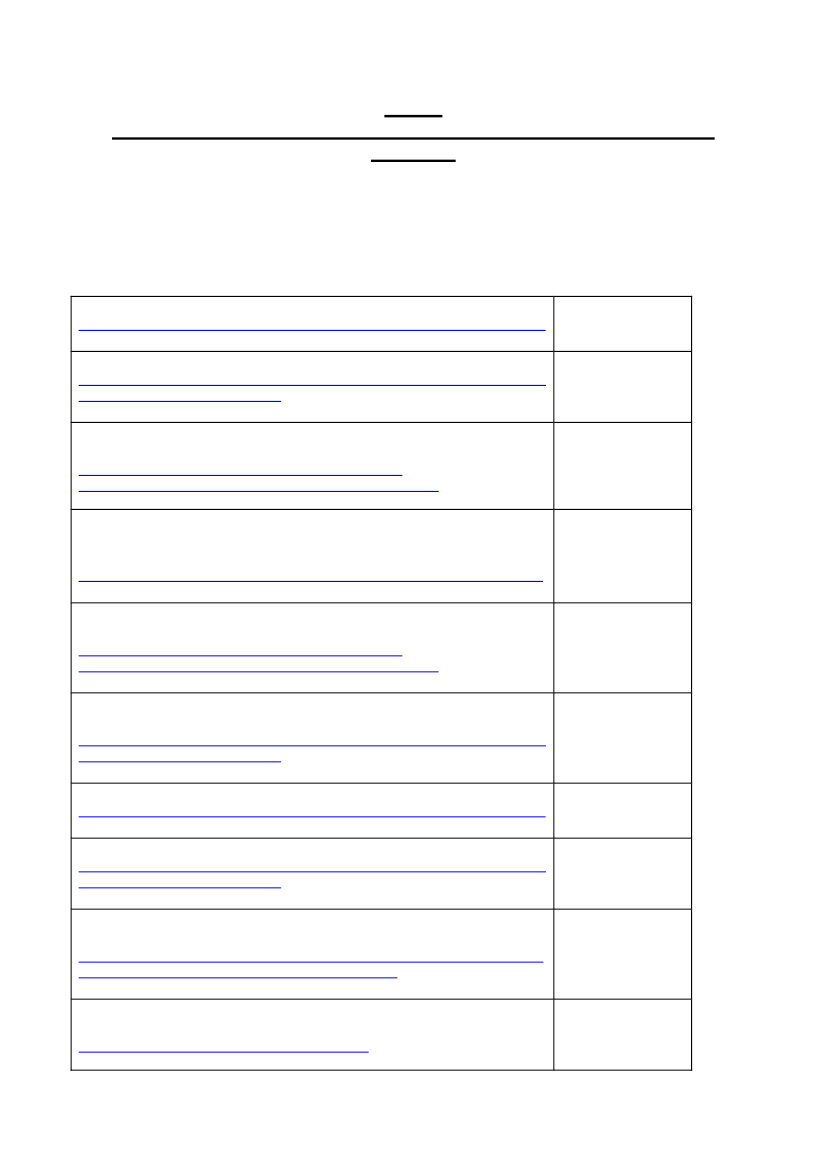Udvalget for Fødevarer, Landbrug og Fiskeri 2010-11 (1. samling)
FLF Alm.del Bilag 71
Offentligt
EUROPEAN PARLIAMENT
2009 - 2014
Special committee on the policy challenges and budgetary resources for asustainable European Union after 2013
5.10.2010
REFLECTION PAPERon Implications of the EU2020 strategy on the post-2013 MultiannualFinancial FrameworkRapporteur:Salvador GARRIGA POLLEDO
1
INTRODUCTIONThe steady gains in economic growth and job creation witnessed over the last decadehave been wiped out – GDP fell by 4% in 2009, industrial production dropped back tothe levels of the 1990s and 23 million people - or 10% of the active population - arenow unemployed. The crisis has also made the task of securing future economicgrowth much more difficult. Our growth potential has been halved during the crisis.Many investment plans, talents and ideas risk going to waste because of uncertainties,sluggish demand and lack of funding. Europe is left with clear yet challengingchoices. Either we face up collectively to the immediate challenge of the recovery andto long-term challenges, regain competitiveness, boost productivity and put the EU onan upward path of prosperity ("sustainable recovery"). Or we continue at a slow andlargely uncoordinated pace of reforms, and we risk ending up with a permanent loss inwealth, a sluggish growth rate ("sluggish recovery") possibly leading to high levels ofunemployment and social distress, and a relative decline on the world scene ("lostdecade").Three scenarios for Europe by 2020Scenario 1: Sustainable recoveryOutput level
Pre-crisis growth path
years
Europe is ableto make a fullreturn toearlier growthpath and raiseits potential togo beyond
Scenario 2: Sluggish recoveryEurope willhave suffered apermanent lossin wealth andstart growingagain from thiseroded basis
Scenario 3: Lost decadeEurope willhave suffered apermanent lossin wealth andpotential forfuture growth
Source: European Commission (COM(2010)2020))What is needed is a strategy to turn the EU into a smart, sustainable and inclusiveeconomy delivering high levels of employment, productivity and social cohesion.This is the Europe 2020 strategy.
2
The aim of this reflection paper is to stimulate discussion in the SURE Committee onthe implications of the EU 2020 strategy on the post-2013 Multiannual FinancialFramework.The EU institutions, notably the European Parliament, have paid utmost attention tothe EU2020 strategy proposal by the Commission. They have already expressed theirgeneral views on the strategy and are starting to address its different sectoraldimensions. In this regard, it is worthwhile recalling that there are ample references inParliament's recently adopted resolutions to aspects related to the funding of EU2020and to the implications on the post-2013 Multiannual Financial Framework (MFF). Tobetter inform the discussion a collection of relevant excerpts from position documentsfrom the different EU institutions and bodies is included in Annex.On the basis of the analysis of the Commission's proposal and of the reactions of theEU institutions and bodies, a number of issues are identified and suggested fordiscussion. These issues fall under four main horizontal categories:alignment of thenext MFF with the EU2020 strategy; setting of priorities; role of nationalbudgets; and qualitative aspects of expenditure.Your rapporteur looks forward to a rich and productive discussion in Committee onthe basis of which he would be able to draft a useful Working Document that could bebroadly shared by the Members of the Committee.SUCCINCTSUMMARY OFEU 2020The European Commission, following a wide public consultation and an evaluation ofthe Lisbon strategy1, adopted on 3 March 2010 its proposal (COM(2010)2020)2onEU2020. According to the Commission"We need a strategy to help us come outstronger from the crisis and turn the EU into a smart, sustainable and inclusiveeconomy delivering high levels of employment, productivity and social cohesion.Europe 2020 sets out a vision of Europe's social market economy for the 21stcentury".The Commission puts forward three mutually reinforcing priorities and seven flagshipinitiatives to catalyse progress under each priority theme:–Smart growth:developing an economy based on knowledge and innovation. Thisincludes research, innovation, cohesion, rural development, education, training andlifelong learning, and digital society policies. Three flagship initiatives fall underthis objective:"Innovation Union";"Youth on the move"; and"A digital agenda for Europe".
1
http://ec.europa.eu/archives/growthandjobs_2009/pdf/lisbon_strategy_evaluation_en.pdf9http://ec.europa.eu/eu2020/pdf/COMPLET%20EN%20BARROSO%20%20%20007%20-%20Europe%202020%20-%20EN%20version.pdf2
3
–Sustainable growth:promoting a more resource efficient, greener and morecompetitive economy. This includes industrial, cohesion, rural development,climate change, transport, and energy policies. Two flagship initiatives fall underthis objective:"Resource efficient Europe"; and"An industrial policy for the globalisation era".
–Inclusive growth:fostering a high-employment economy delivering social andterritorial cohesion. This includes cohesion, employment, skills, and fightingpoverty policies. Two flagship initiatives fall under this objective:"An agenda for new skills and jobs"; and"European platform against poverty"
The Commission also proposes 5 headline targets to define where the EU wants to beby 2020 and to track progress. To ensure that each Member State tailors the EU2020strategy to its particular situation, these EU targets should be translated into nationaltargets and trajectories:– 75 % of the population aged 20-64 should be employed.– 3% of the EU's GDP should be invested in R&D.– The "20/20/20" climate/energy targets should be met (including an increase to 30%of emissions reduction if the conditions are right).– The share of early school leavers should be under 10% and at least 40% of theyounger generation should have a tertiary degree.– 20 million less people should be at risk of poverty.According to the Commission, EU-level instruments, notably the single market,financial levers and external policy tools, should be fully mobilised to tacklebottlenecks and deliver the Europe 2020 goals.
4
1. ALIGNMENT OF THE POST-2013 MFFWITHEU2020There is widespread agreement among the Institutions of the need to mobilise all EUinstruments and policies to achieve the objectives of the EU2020 strategy.Furthermore, Parliament has underlined that the EU Budget must play a central role inachieving the EU2020 targets and that the current budget does not sufficiently reflectthe financial needs associated with tackling 21st century challenges.The aim of aligning EU expenditure with the EU 2020 goals has been clearlyexpressed by the Commission:"The Commission will propose action to developinnovative financing solutions to support Europe 2020's objectives by fully exploitingpossibilities to improve the effectiveness and efficiency of the existing EU budgetthrough stronger prioritisation and better alignment of EU expenditure with the goalsof the Europe 2020 to address the present fragmentation of EU funding instruments(e.g. R&D and innovation, key infrastructure investments in cross-border energy andtransport networks, and low-carbon technology)...;".In this respect, the allocation of the 2011 Draft Budget appropriations to EU 2020Flagships is, according to the Commission3, the following:% of Heading 1a supporting EU2020 Flagships% of Heading 1b supporting EU2020 Flagships% of Heading 2 supporting EU2020 Flagships% of Rural Development
86%67%18%70%
% of Heading 3a supporting EU2020 Flagships% of Heading 3b supporting EU2020 Flagships% of Heading 4 supporting EU2020 Flagships% of Headings 1 to 4 supporting EU2020 Flagships
11%25%10%43%
The European Council has also underlined the need of all common policies to supportthe strategy" All common policies, including the common agricultural policy andcohesion policy, will need to support the strategy.".The contribution of the Common Agricultural Policy (CAP) and of the Cohesionpolicy to EU2020 has received so far particular attention in communications andresolutions by the Commission, the Parliament and the Committee of the Regions.Regarding CAP, the Commission has underlined its contribution to the objective ofsustainable growth, more specifically its contribution to"address climate change, inparticular through adaptation measures based on more efficient use of resources,which will also contribute to improving global food security".It could be interpretedthat Parliament has gone beyond a mere contribution of CAP to the strategy:"CAPreform by 2013 and a sustainable forestry strategy should be considered within theframework of the EU2020 strategy".
3
Letter of Mr Lewandwsky to Ms Jedrzejewska of 20 August on the financing of the EU 2020 strategyin the EU 2011 Budget
5
As of Cohesion policy, the Commission declares that"economic, social andterritorial cohesion will remain at the heart of the Europe 2020 strategy to ensurethat all energies and capacities are mobilised and focused on the pursuit of thestrategy's priorities. Cohesion policy and its structural funds, while important in theirown right, are key delivery mechanisms to achieve the priorities of smart, sustainableand inclusive growth in Member States and regions."Parliament shares the view thatis it is an effective and efficient mechanism for EU2020 delivery but "stressesthat thecohesion policy is not subordinated to the EU2020 Strategy; highlights that whilst thecohesion policy's priorities should be aligned with the EU2020 objectives, sufficientflexibility should be allowed to accommodate regional specificities and support theweaker and neediest regions to overcome their socio-economic difficulties, naturalhandicaps and reduce disparities".Parliament furthermore considers that"a strongand well-financed cohesion policy, embracing all European regions, must be a keyelement of the EU2020 Strategy"and that it is"unnecessary to create new separatethematic funds to address the EU2020 goals and instead deems that they should beincluded in cohesion and rural development policies".Against this background I suggest structuring the discussion on this theme around thefollowing questions.EU2020 budget alignment-Should the EU2020 strategy be the strategic policy reference of the post-2013MFF?-Should the three EU2020 broad objectives determine the structure of the post-2013 MFF? Should there be one heading per objective? Or should there be anearmarking for EU2020 objectives across "classical" headings?-How should the EU2020 related expenditure be defined? How to distinguishbetween flagship-related expenditure and broader EU2020 expenditure? Doesthe preliminary 2011 DB Commission's allocation to flagships provide a properaccount of the budgetary dimension of the strategy?-How should be the EU2020 strategy and its corresponding budget be adapted tochanging policy needs? How important should be budget flexibility within andacross EU2020 objectives?-Should cohesion policy and the EU2020 Strategy be integrated? Shouldcohesion policy be subordinated to the EU2020 Strategy or sufficient flexibilityshould be allowed to accommodate regional specificities?-Should rural development policy be considered within the framework of theEU2020 strategy? To what extent should CAP (first pillar) also be consideredwithin the strategy?-Should the external dimension of the EU2020 strategy be financed under therespective sectoral policies or under the external policies heading?-Should all the administrative expenditure be included in a single Heading?
6
2. SETTING OFPRIORITIESParliament has in its EU2020 related resolutions already identified a number ofpolicies that should be granted with more budgetary resources. A non-exhaustive listof priorities includes:-research (double ICT research) and innovation (green technologies,broadband);-space: completing Galileo-energy: key energy infrastructure investments (European energy grid, greencorridors, interconnectors), energy efficiency;-transport: TEN-T, decarbonising the transport sector;-education and youth.Priority setting-Should the post-2013 MFF support a lower number of policy objectives than thecurrent one? Or should the prioritisation mainly take place within each policyarea?-Could the concept of European added value (EAV) help to prioritise acrosspolicy objectives or within them?-How should the Commission justify that subsidiarity and proportionality(expenditure is the best option) are complied with in the MFF proposal?
3. THEROLE OFNATIONALBUDGETSThe EU2020 strategy commits both the EU and the Member States. The strategy willsucceed if Europe acts collectively, as a Union. There is a strong need for bettersynergy between EU and national level spending, while respecting subsidiarity.Although the EU and the Member States coordinate their policies through a widerange of formal (e.g. BEPG, OMC) and implicit mechanisms, budget synergies arerarely put into practice. According to a study procured by Parliament4, nationalbudgets, apart from some exceptions – mainly found in regional policy – seldom referto their contribution to achieving the objectives of the Lisbon or other EU strategies.The new economic and budgetary policy coordination mechanism (so-called"European semester") endorsed by the ECOFIN Council on 7 September5could offeran effective opportunity to achieve the desired budgetary synergies. Under this newsix-month cycle, Member States, taking the advice of the European Council on themain economic challenges into account, will review in April their medium-termbudgetary strategies and at the same time draw up national reform programmes. InJune and July, the European Council and the Council will provide policy advicebefore the member states finalise their budgets for the following year.
4
http://www.ipolnet.ep.parl.union.eu/ipolnet/webdav/site/myjahiasite/shared/bss/regulatory_and_other_questions/14052010_synergy_between_european_national_budgets_final_report.pdf5http://www.consilium.europa.eu/uedocs/cms_data/docs/pressdata/en/ecofin/116306.pdf
7
The Role of National Budgets-How could national budgets be better aligned with the EU2020 strategy? Howcould be ensured that there is no overlapping between EU and nationalexpenditure so that the best added value of the Union expenditure can bederived?-Should Member States include in their medium-term budgetary strategies anoverview of their financial commitments and efforts to the realisation of theEU2020 objectives?-Should co-financing be used more to improve budget synergy? Should morefunds be allocated to joint programming of national programmes?-Does the absence of an agreed Europe-wide standard budget complicate thesearch for synergy? Does the length and timing of budget cycles make thingsmore difficult?-Which role could the cooperation between the European and the NationalParliaments play for improving medium-term budgetary synergy?3. QUALITY OFEXPENDITUREAccording to the Commission the MFF discussion"should not only be about levels offunding, but also about how different funding instruments such as structural funds,agricultural and rural development funds, the research framework programme, andthe competitiveness and innovation framework programme (CIP) need to be devisedto achieve the Europe 2020 goals so as to maximise impact, ensure efficiency and EUvalue added."We need to ensure that the policies pursued are legally justified, respect the principleof subsidiarity but also that they are carried out, in accordance with the principle ofproportionality, in the optimal way to achieve the intended results. In each instance itshould be assessed which is the best policy-mix to attain the objectives: legislation,coordination, expenditure or a combination of these. Should the recourse to fundingbe justified, the establishment of the level of funding is strongly related to the designof the spending programme, to how efficiently it can turn euros into intended results.This leads the rapporteur to propose the following topics for discussion:Quality of expenditure-To what extent should EU funding be conditional on compatibility with theEU2020 strategy?-Should the funding level of programmes under the post-2013 MFF take intoaccount the performance record of the current spending programmes (mid-termevaluation)?-Should the funding level of programmes under the post-2013 MFF be revieweddepending on results or performance?-Should the level of EU funding be conditional on the introduction of reforms(e.g. simplification in Research Framework Programme)? How could thediscussion on the allocation of financial resources (MFF) and programmedesign (legislative proposals of new multiannual spending programmes) becoordinated?8
ANNEXDOCUMENTS FROMEU INSTITUTIONS AND BODIES REGARDING THEEU2020STRATEGY
As background to the discussion, this Annex provides excerpts from recent resolutions of theEuropean Parliament, conclusions from the European Council and opinions of the Committee of theRegions and the Economic and Social Committee related to the implications of the EU2020 strategyon the post-2013 MFF. They are grouped around the four horizontal issues identified. Thefollowing documents have been examined:European Council conclusions (EC2)http://www.consilium.europa.eu/uedocs/cms_Data/docs/pressdata/en/ec/115346.pdf
17 June 201016 June 2010
European Parliament resolution on EU 2020 (EP5)http://www.europarl.europa.eu/sides/getDoc.do?pubRef=-//EP//TEXT+TA+P7-TA-2010-0223+0+DOC+XML+V0//EN
European Parliament resolution on Community innovation policy in achanging world EU 2020 (EP4)http://www.europarl.europa.eu/sides/getDoc.do?pubRef=-//EP//TEXT+REPORT+A7-2010-0143+0+DOC+XML+V0//EN
15 June 2010
Resolution of the Committee of the Regions on the strongerinvolvement of Local and Regional Authorities in the Europe 2020strategy (COR)http://portal.cor.europa.eu/europe2020/news/Documents/CdR 199-2010 fin EN.doc
10 June 2010
European Parliament resolution on a Digital Agenda for Europe:2015.eu (EP3)http://www.europarl.europa.eu/sides/getDoc.do?pubRef=-//EP//TEXT+REPORT+A7-2010-0066+0+DOC+XML+V0//EN
25 May 2010
European Parliament resolution on the contribution of the Cohesionpolicy to the achievement of Lisbon and the EU2020 objectives (EP2)http://www.europarl.europa.eu/sides/getDoc.do?pubRef=-//EP//TEXT+TA+P7-TA-2010-0191+0+DOC+XML+V0//EN
20 May 2010
European Council conclusions (EC1)http://www.consilium.europa.eu/uedocs/cms_Data/docs/pressdata/en/ec/113591.pdf
25/6 March 201010 March 2010
European Parliament resolution on EU 2020 (EP1)http://www.europarl.europa.eu/sides/getDoc.do?pubRef=-//EP//TEXT+TA+P7-TA-2010-0223+0+DOC+XML+V0//EN
Communication from the Commission EUROPE 2020 A strategy forsmart, sustainable and inclusive growth (COM)http://ec.europa.eu/eu2020/pdf/COMPLET%20EN%20BARROSO%20%20%20007%20-%20Europe%202020%20-%20EN%20version.pdf
3 March 2010
Opinion of the European Economic and Social Committee on thepost-2010 Lisbon Strategy (EESC)http://www.eesc.europa.eu/?i=portal.en.news.10090
4 November 2009
i
1. ALIGNMENT OF THE POST-2013 MFFWITHEU2020General aspects"The Commission will propose action to develop innovative financing solutions to support Europe2020's objectives by fully exploiting possibilities to improve the effectiveness and efficiency of theexisting EU budget through stronger prioritisation and better alignment of EU expenditure with thegoals of the Europe 2020 to address the present fragmentation of EU funding instruments (e.g.R&D and innovation, key infrastructure investments in cross-border energy and transportnetworks, and low-carbon technology)...;"(COM)"Today we adopt "Europe 2020", our new strategy for jobs and smart, sustainable and inclusivegrowth. It constitutes a coherent framework for the Union to mobilise all of its instruments andpolicies and for the Member States to take enhanced coordinated action. It will promote thedelivery of structural reforms. The emphasis must now be on implementation, and we will guide andmonitor this process. We will discuss further, over the coming months, how specific policies can bemobilised to unlock the EU's growth potential, starting with innovation and energy policies;"(EC2)"5. g) All common policies, including the common agricultural policy and cohesion policy, willneed to support the strategy. A sustainable, productive and competitive agricultural sector willmake an important contribution to the new strategy, considering the growth and employmentpotential of rural areas while ensuring fair competition. The European Council stresses theimportance of promoting economic, social and territorial cohesion as well as developinginfrastructure in order to contribute to the success of the new strategy."(EC1)"25. Recognises that the EU Budget must play a central role in achieving the EU 2020 targets;..."(EP2)"33. Takes the view that the current budget does not sufficiently reflect the financial needsassociated with tackling 21st-century challenges; urges the Commission to put forward anambitious proposal to make the EU 2020 strategy a success;"(EP1)"3.9.1. Reform the EU budget in accordance with Lisbon: Generally speaking, the budgets ofindividual policies need to be re-evaluated in line with Lisbon and geared towards research andcompetitiveness, environment and climate, investment in sustainable energy use; constructive publicspending in the business location, active labour market policy, work/family life balance, socialcohesion, poverty prevention and creating new, high-quality jobs. In connection with this, a reform-based discussion on the EU budget relating to Lisbon should also be given consideration in theforthcoming 2014-2020 financial framework. An effective implementation of European targets willalso require that the consolidation of the regional dimension is included as a key topic in thediscussion on the funding of structural and cohesion policy after 2013."(EESC)Common Agricultural Policy"9. Is disappointed that no mention was made of the agricultural sector in the original proposalsfor the EU 2020 strategy, despite agriculture's potential to make an active contribution to meetingthe main challenges ahead; is convinced that, with the right policy framework and adequatebudgetary resources, agriculture and forestry can play an important role in the overall Europeanstrategy designed to secure economic recovery and achieve climate targets, while at the same timecontributing to EU and global food security, growth and job creation;"(EP1)
ii
"63. Points out that CAP reform by 2013 and a sustainable forestry strategy should be consideredwithin the framework of the EU 2020 strategy; is convinced that, with the right policy frameworkand adequate budgetary resources, agriculture and forestry can play an important role in anoverall European strategy to secure economic recovery, while at the same time contributing to EUand global food security, preserving the rural landscape, which accounts for 90% of the EU'sterritory, ensuring the protection of jobs in rural areas, securing environmental benefits andmaking an important contribution to the search for alternative resources;"(EP5)Cohesion Policy"Economic, social and territorial cohesion will remain at the heart of the Europe 2020 strategy toensure that all energies and capacities are mobilised and focused on the pursuit of the strategy'spriorities. Cohesion policy and its structural funds, while important in their own right, are keydelivery mechanisms to achieve the priorities of smart, sustainable and inclusive growth in MemberStates and regions."(COM)"25. ...considers that cohesion policy due to its strategic focus, strong and binding conditionality,tailor-made interventions, and monitoring and technical assistance, is an efficient and effectivemechanism for EU2020 strategy delivery;"(EP2)"28. Emphasises that a strong and well-financed cohesion policy, embracing all European regions,must be a key element of the EU2020 Strategy; believes that this policy, with its horizontalapproach, is a pre-condition for the successful delivery of the EU2020 goals, as well as forachieving social, economic and territorial cohesion in the EU; rejects all attempts to renationalisethe cohesion policy and asks for the regional dimension to be fully supported in the review of theEU budget;"(EP2)"30.Stresses that the cohesion policy is not subordinated to the EU2020 Strategy; highlights thatwhilst the cohesion policy's priorities should be aligned with the EU2020 objectives, sufficientflexibility should be allowed to accommodate regional specificities and support the weaker andneediest regions to overcome their socio-economic difficulties, natural handicaps and reducedisparities;"(EP2)"37. Believes, however, that the Union should continue to use, as its main financing mechanisms,the Cohesion Fund and structural funds, which have well-established and operational deliverymethods; considers it unnecessary to create new separate thematic funds to address the EU2020goals and instead deems that they should be included in cohesion and rural development policies;"(EP2)"2. emphasises that Cohesion policy, with its devolved approach and system of multilevelgovernance, is the only European Union policy to link the goals of the Europe 2020 strategy andthe new challenges with local and regional authorities, but it does need sufficient funding. It istherefore essential that cohesion policy continue to be geared towards the goals of sustainableeconomic growth, social inclusion, employment, fight against climate change and the quality andefficiency of public service provision;"(COR)
iii
External dimension"5. h) The strategy will include a strong external dimension, to ensure that EU instruments andpolicies are deployed to promote our interests and positions on the global scene throughparticipation in open and fair markets worldwide."(EC2)"64. Stresses that more attention should be paid to the external dimension of the EU 2020 strategy;urges the Commission to take a broader and more comprehensive approach in its external action,in line with the EU concept of policy coherence for development; calls on the Commission to use itstrade strategy for EU 2020 to promote the Union's core values, such as the promotion of humanrights, democracy, the rule of law and fundamental freedoms and the defence of the environment;"(EP5)
2. SETTING OFPRIORITIES"41. Believes that the EU should embark on major economic projects, such as a truly Europeanenergy grid, completion of the Galileo project and the widespread application of green technology,including systematic renovation of the EU's building stock, e-health and efforts to improve andupdate ICT infrastructure;"(EP1)"21. Calls for a strengthened European approach to financing innovation and to prevent thecurrent fragmentation and short-termism; considers that the provision of adequate financialresources is vital to the development of innovation and that the EU budget for innovation shouldtherefore be substantially increased; calls for this to be reflected in the upcoming revision of thecurrent financial framework and in the planning process in connection with the 2014-2020Financial Perspective;..."(EP4)"26. Emphasises that Europe should be at the cutting edge in the development of internettechnologies and ICT low-carbon applications; proposes that the EU ICT research budget bedoubled in the next Financial Perspective;"(EP4)"50....proposes that the EU ICT research budget be doubled and that the budget for ICT take-up bemultiplied by four in the next Financial Perspective;"(EP3)"19. Emphasises that major R&D projects, key energy infrastructure investments and the new EUcompetence on space policy, as well as EU innovation policy, require solid, credible andsustainable EU financial support if the Union's key 2020 objectives are to be met;"(EP5)"29. ...calls on the Commission to increase the total financial envelope earmarked for research andinnovation in the Community budget;"(EP5)"50. Notes that, to tackle the climate challenge, substantial investments in energy infrastructure willbe needed before 2020 and beyond, including investment in the upgrading of Europe's energynetworks, a truly European, smart energy super-grid, green corridors, interconnections, completingthe Galileo project, green technology, e-health, the Trans-European Transport Network (TEN-T)programme and free and equitable access to ICT and broadband;"(EP5)"55. Reiterates its request that adequate financing be secured to support clean, sustainable andefficient low-carbon energy technologies, amounting to total spending from the EU budget of atleast EUR 2 billion annually, in addition to FP7 and CIP, from 2010 onwards;..."(EP5)iv
"49. ...calls, therefore, on the Commission and the Member States to put energy efficiency at the topof the EU agenda, including in budgetary terms;"(EP5)"51. Points out that the Union needs to invest more efficiently in existing transport infrastructures,such as TEN-T, to boost job creation, improve social and territorial cohesion and create asustainable and interoperable transport system; calls for an interplay between transport modes andthe smart use of logistics, since de-carbonising the transport sector and making it sustainable willrequire innovation, new technologies and financial resources;"(EP5)"34.Emphasises that Parliament has also identified youth as a key priority for the 2011 budget andhas clearly expressed its intention to afford further financial support to all major programmes inthat field;"(EP5)
3. SYNERGY WITHNATIONALBUDGETS"19. Believes that the Member States should indicate how they used EU funds to achieve the variousEU 2020 objectives...;"(EP1)"55. ...calls, in this context, for the Commission and the Member States to establish a timetable fortheir funding commitments, as a matter of urgency, to ensure that funds start flowing from 2010 forthe various initiatives of the SET plan, as well as complementary initiatives;"(EP5)
4. QUALITY OFEXPENDITURE"The EU multi-annual financial framework will also need to reflect the long-term growth priorities.The Commission intends to take the priorities, once agreed, up in its proposals for the next multi-annual financial framework, due for next year. The discussion should not only be about levels offunding, but also about how different funding instruments such as structural funds, agricultural andrural development funds, the research framework programme, and the competitiveness andinnovation framework programme (CIP) need to be devised to achieve the Europe 2020 goals so asto maximise impact, ensure efficiency and EU value added. It will be important to find ways ofincreasing the impact of the EU budget – while small it can have an important catalytic effect whencarefully targeted."(COM)"19. Believes that...-EU funding should be conditional on results and compatibility with theobjectives of the EU 2020 strategy;"(EP1)"6. Criticises the lack of an overall assessment of the impact of cohesion expenditure on regionaldevelopment; calls upon the Commission to assess the territorial impact of earmarking StructuralFunds to the Lisbon Strategy and to evaluate whether this system is actually contributing tobalanced and coherent regional development;"(EP2)"32. Considers that explicit targets should be set for SME-compatible funding tools, to guaranteedigital interoperability and accessibility, and that they should clearly include EU targets for eco-innovation;"(EP5)
v
"40. Stresses the importance of providing for a minimum allocation of funds for SMEs in the opencalls published under the Research and Innovation initiatives, following the same commitmentadopted for the FP7 (15% of the resources in the Cooperation programme);"(EP4)"46. Believes that the rules for distribution of the EU structural funds should be adjusted to takeaccount of the need to promote innovation that reduces costs and improves resource use;"(EP5)"30. Underlines the importance of simplifying research and development funding and cutting redtape, so that knowledge-driven businesses can maximise their effectiveness and new employmentopportunities can be encouraged;"(EP5)"44. Considers that enhanced support for innovation must always be accompanied by a reductionin the red tape confronting applicants; calls on the Commission to eliminate red tape by re-engineering Framework Programme processes and by creating a users' board;"(EP4)
vi














